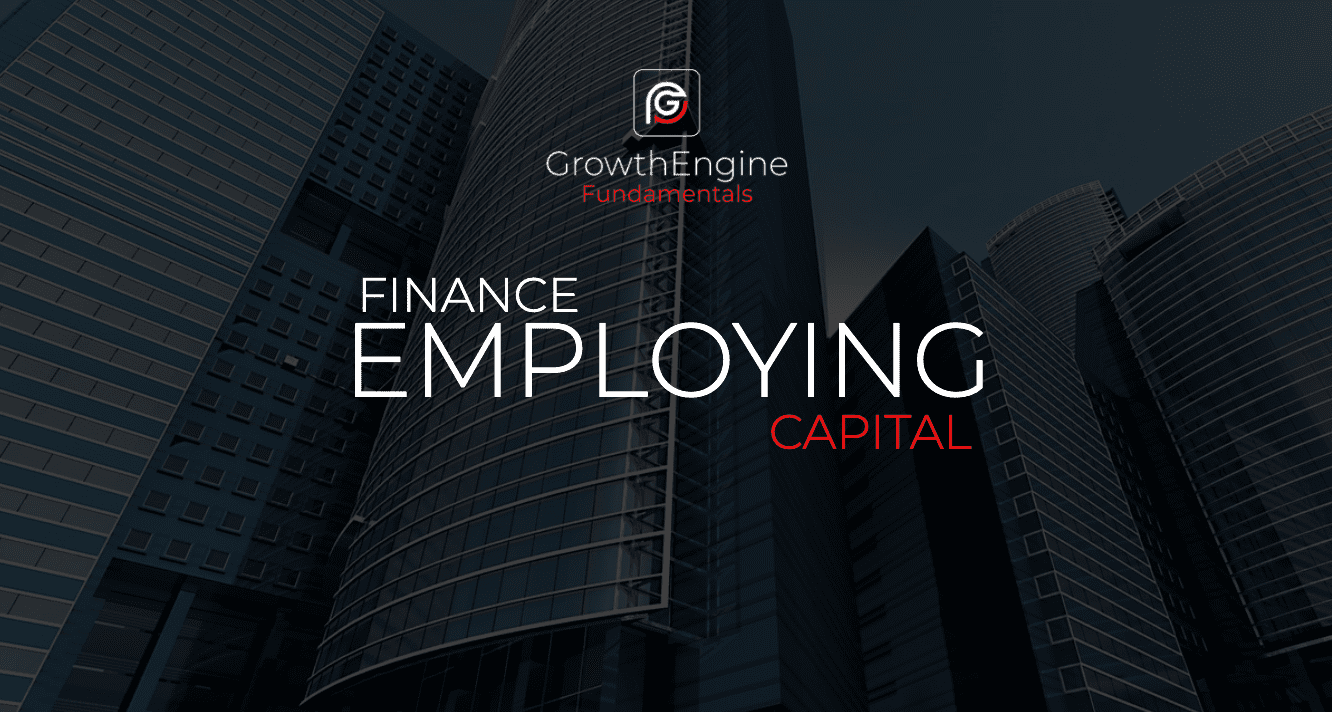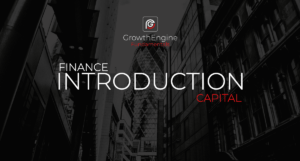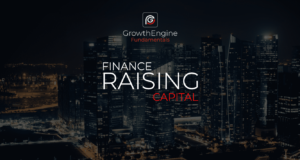
Finance Fundamentals – Employing Capital
Introduction
The second stage really is if we have capital or finance in the business.
- How do we best employ that?
- How do we get the best use out of it?
- How do we make sure that once we’ve got it we employ it for the best possible ways?
So in this one, we’re going to talk through some obvious points and some high line areas again.
We’re going to start with return on investment.
When we look at the return on investment we’re really talking about, we’re putting money into a business and wherever that’s come from as we covered in the raising capital sections irrelevant to this stage.
But if we’re putting money in, there may be some cash you’ve earned, so the business burns cash and loses money until it sort of breaks even and moves forward.
Ultimately we’re doing this because we want to return on our investment.
You will see abbreviations such as ROI.
R for Return
O for On
I for Investment
Of course.
But really the way I like to look at it is it’s a capital employed because we’re looking to acquire profit.
We’re looking for the acquisition of profit.
That can be translated to ROC or ROCI, return on capital investment.
Why would you go and put, again whether it’s one pound or a million or 10 million or 50 million into a business and not expect to at least get your money back plus a satisfactory return?
Now, when you’re employing capital, to get that return on investment it can be done at significant dilution of ways.
Research and Development
Infrastructure
The infrastructure of course.
That’s an obvious one.
You’re going to need buildings, you’re going to need a plant, machinery, computer equipment, training rooms, projectors, trade show stands.
You’re going to need a customer service department, phone systems, all those types of things and anything that helps you facilitate the orders.
Do you remember when we talked earlier about, we referenced the operational fulfilment?
Well that infrastructure, what keeps the lights on?
That’s infrastructure.
You’re going to need to make sure you’re going to be constantly updating your infrastructure.
That can link nicely into research and development to make sure you’re staying ahead of the game.
Employing capital into project management.
Taking new ideas before we’re ready to go to market.
So when the research and development are being done, building, manufacturing, importing, exporting, hiring new areas, moving into new areas, managing those projects to make sure that they are saleable, they’re regulatory.
If you have ISO 9,000 or related type of business or some other type of regulation.
If you’re in the aviation business, you’re in the tech business, you’re in the finance business like we are, we’re in the FCA, all that type of stuff, you might need to have project capital in them to keep that going.
Too many ideas stay on the whiteboard or on somebody’s desktop and they have the infrastructure to deliver on it but the gap between research and development and infrastructure really is the project manager to get that to market.
Or get ready to go to market.
Then go to market which is sales and marketing.
Let’s be realistic.
You’ve got the best product out there or service, you have an infrastructure ready to facilitate and deliver to market.
It’s being financed and project managed and you need to get it out there.
So you definitely need a budget for capital or employing capital for your marketing team and dependent on your business that might just be an eCommerce store.
Like a Shopify store or something like that.
It might mean you have a team of 500 people in the field as sales representatives.
You may have a marketing team that’s covering TV, radio, trade show, online, inbound, outbound, pay per click.
So all those types of things.
So you think about it, you’ve got a pot of money, you got a business there.
Some of you, that pot of money was moving into, making sure that your business is staying ahead of the market with R&D, research and development.
Reinvesting and maintaining infrastructure so you can compete.
Project manage that to certainly ensure that it’s ready to go at the water’s edge, to dive in and then your golden market capital there to get you the marketing and your sales teams.
So again, if there are any questions you’ve got about employing capital in your business for the most effective use and what percentages.
It’s too broad of a market to say hey, you should be putting 20% into R&D or at least 30% into Go To Market.
Depends on what you cost to acquire a customer, what your client lifetime value is, what your cost of borrowing is, how fast the sale happens, what your operating infrastructure.
What does it cost you each day as a break-even to keep the lights on?
Every business is different but if you want to share that with me, again as I say you can leave a comment on the blog below.

There’s no sales pitch from us.
One of our Growth Engine inbound pro’s is going to sit down and they’re really looking at three things.
Where you’re at as a business, they’re going to learn about your business, they’re going to see if we’re really a good fit and you’ve got problems or challenges or pain points or aspirations that we can help with.
The worst thing if you come off the call, you’ll have had some free solid tips.
And then if that’s something that works well we can set up some further 45-minute sort of what we call discovery calls and meetings to really dig deep with that.
And if you want to take advantage of that, literally click the let’s talk button on this page, or you can head over to any page on https://mikejmidgley.com/ for everything.
Including details about Growth Engines and what we do from there. So that wraps up our Growth Engine Fundamentals on Introduction to Finance.
As I say to wrap, if you want to shoot over to Twitter and use #AskTheAgency or #GrowthEngine ask us any questions.
We’ll get those answered for you.
Alternatively, leave us a comment below on the blog.
If you’re watching this on the YouTube channel and want to know what the blog address is, it’s https://mikejmidgley.com/
So that’s https://mikejmidgley.com/
You can head over there and as always to Get In The Game, Go Do The Hustle, Go Make It Happen and we’ll catch up with you on a Growth Engine Fundamental real soon.
If you’d like to check out the rest of the Growth Engine finance fundamentals series, select an article below









